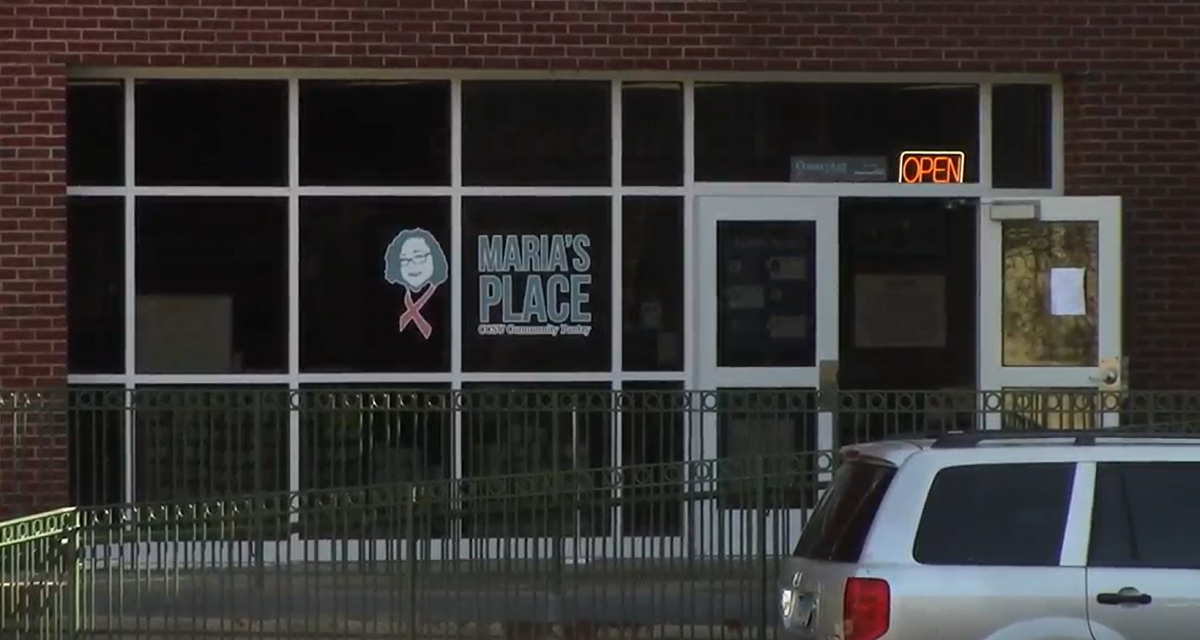By: Jacqueline Stoughton
English professors at Central Connecticut State University are in uproar over a new student mural being created in the corridors of Willard hall that depicts the humanization of soldiers in a war scene, all holding guns and assault rifles. To which many English faculty members are finding quite disturbing.
The controversial mural will be located on the third floor of Willard hall. The mural takes up the entire wall next to the faculty women’s restroom, and wraps around to extend onto the same wall as the women’s bathroom doors. The painting depicts every day people dressed as a ballerina, chef, and football player holding various military weaponry in the midst of a battle scene. These figures are meant to resemble soldiers in their every day life back home, and humanize them.
“I just wanted to do something for my friends, who instead of going to college, went to war,” said Aurora Matraku, CCSU art student and creator of the new mural in Willard. “I just wanted to remember them, and remind people that those are someone’s friends, family and community members out there, and not just soldiers.”
Along with the demonstration of guns, many faculty members are mostly concerned with a specific part of the mural in which a figure of a chef is holding a gun, pointing it directly at the head of whoever enters the women’s faculty bathroom.
“The most central objection seems to be the positioning of one of the weapons that’s pointing directly at the head of anyone who enters the women’s faculty bathroom,” said Stephen Cohen, Chair of the English Department. “There are a number of women who use that bathroom everyday who feel troubled, disturbed and threatened by having to walk through that door.”
Cohen explains the content and the placement of the mural tend to be the main issues. He explains how there are people who spend their entire workweek on the third floor of Willard who aren’t happy about having to look at a mural that contains automatic weapons being pointed at people.
Christine Doyle, CCSU English professor, agrees that the positioning of the gun facing the women’s faculty bathroom is what is most disturbing about this mural.
“I drew the drawing not planning to be a bathroom there,” said Matraku. “I didn’t intentionally pick this wall it just fit well, a lot better than a lot of the other walls, and I was limited.”
“My objection is it being put in my workspace in a manner where I can’t avoid seeing it day in and day out every time I come to work,” said Doyle. “I should have some right to see it or not see it as I choose.”
“These are university buildings they’re all public space,” said Mike Alewitz, CCSU art professor, who runs the mural program on campus. “The fact that you work here doesn’t mean this is your workspace. You pass it on the way to your workplace.”
“I think it shows a certain amount of callousness,” said Stuart Barnett, English professor at CCSU. “Why is the university going to defend freedom of speech in this way? Why here?”
Barnett describes an additional mural, also located on the third floor of Willard, right down the hall from his office, as depicting torture and bombing in Iraq.
“We have the Iraqi torture mural and now the automatic gun mural. I challenge you to find any place on campus that shows stuff like this; certainly not in any building with administrators in them,” said Barnett.
“Some people have referred to it as about Iraq, and there are some references, but it’s more complex than that,” said Alewitz. He explains the artists were interested in women, and included reproductions of Michelangelo’s faces from the Renaissance; this was counter posed with images of Muslim women trapped in war, which is another issue that the artist was interested in and passionate about.
“We’re in a state of permanent war, this is a reality of peoples lives. There’s no more in Willard than anywhere else,” said Alewitz. “These murals are unique to the campus, and are a tremendous gift. You don’t have to like them all, I don’t like them all and I teach the course, everybody has their preferences.”
“Willard is seen as a dead zone. It can’t be a coincidence that there are two violent themed murals here,” said Barnett. Many faculty members also feel as though Willard is the building the university uses to, in a sense, hide the more violent and controversial murals painted by students.
Alewitz explains how this accusation has no truth to it at all, and there are two possible ways of determining where a student’s mural will be placed on campus. If a student works closely with a specific department, they’ll create something relatable to that department, and it’ll be placed in their building.
For individual projects, like Matraku’s, students will walk around campus and pick a wall that they like in whatever building they like.
“The students create a proposal, which then goes to the facilities planning committee, then the president signs off on it,” said Alewitz. “It tends to be more about the physical nature of the wall, most of these murals can go anywhere.”
“I feel like they’re missing the original point, and I went out of my way to avoid them focusing on something other than what I was trying to say, and that’s exactly what happened,” said Matraku.
“The mural class is unique because in a sense the university is our classroom. A few people objecting isn’t going to make it come down,” said Alewitz. “She’s under no obligation to change anything. She’s been approved and it’s going up as planned.”



